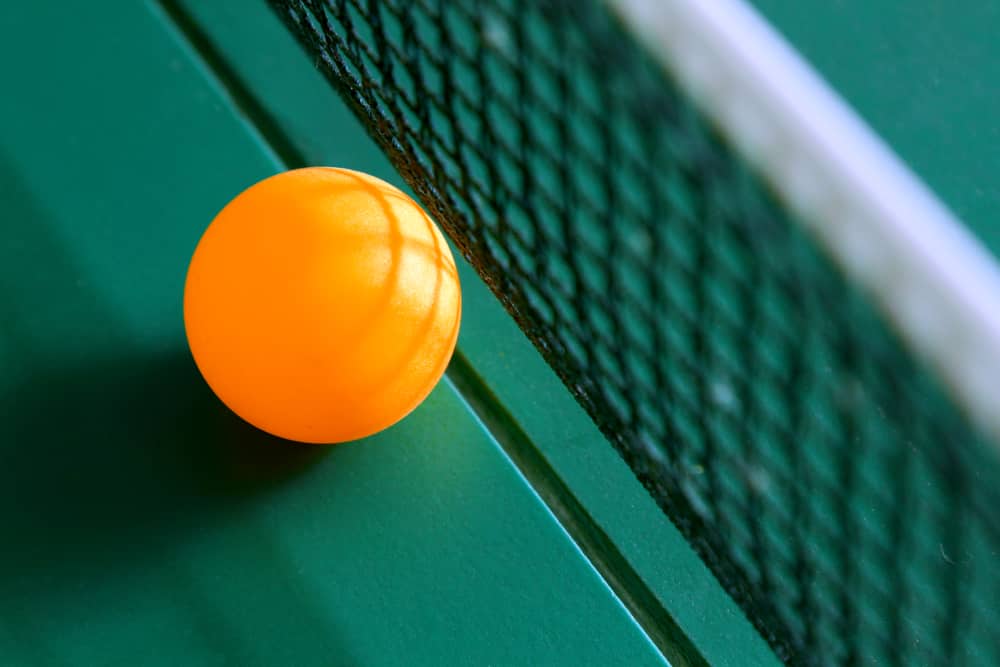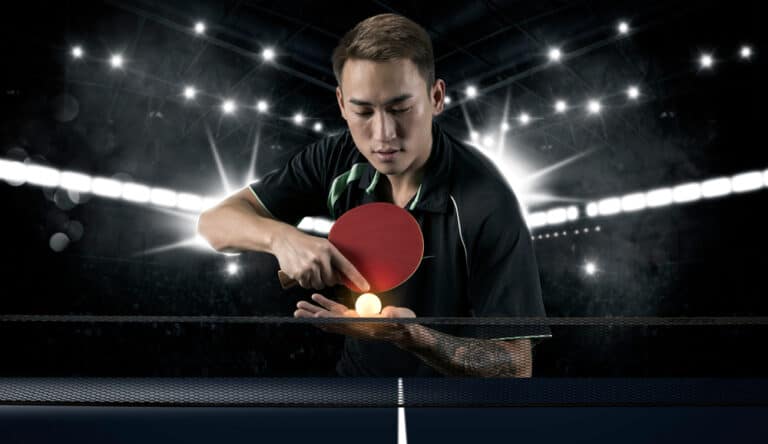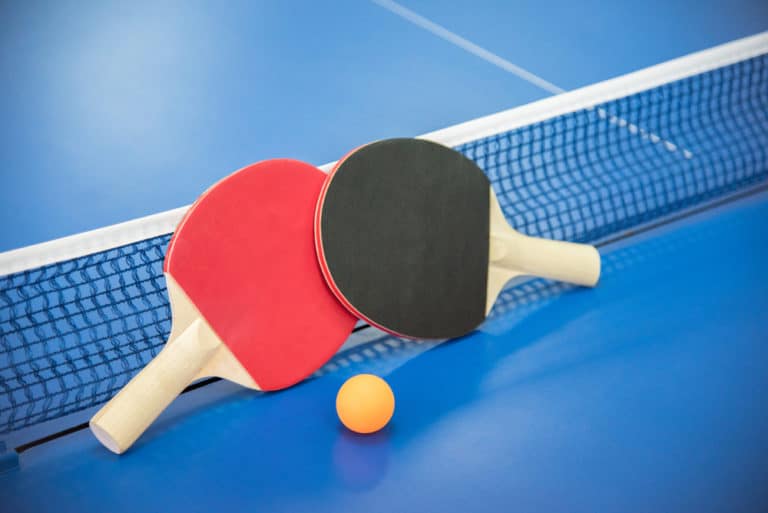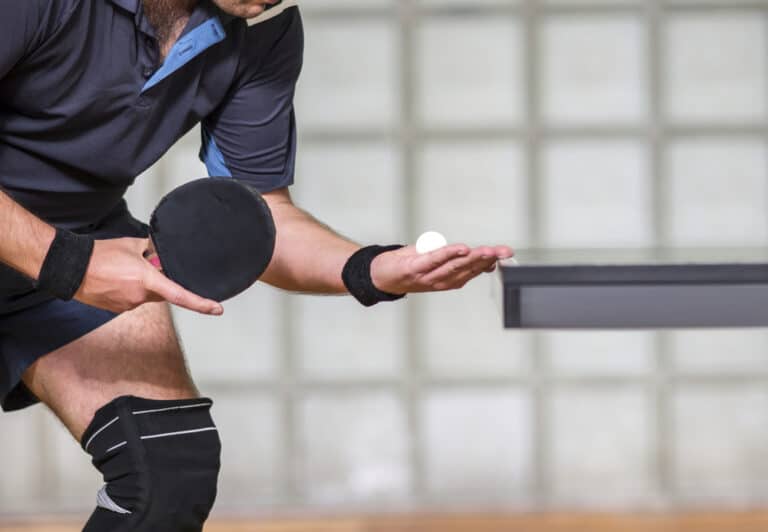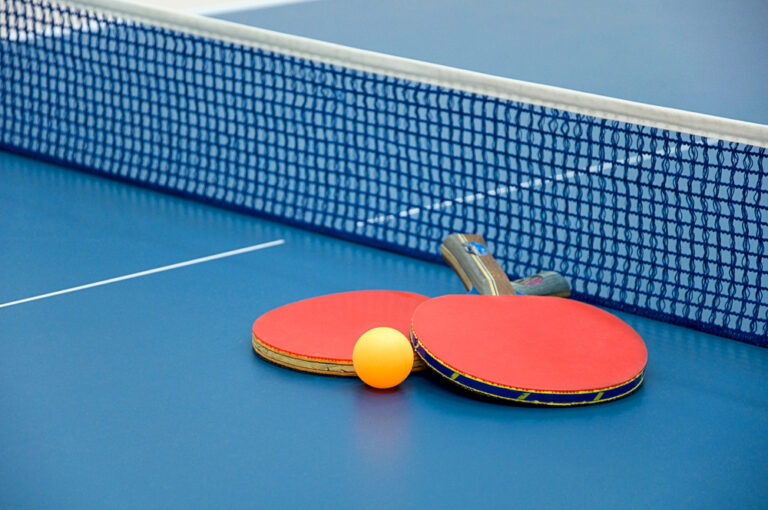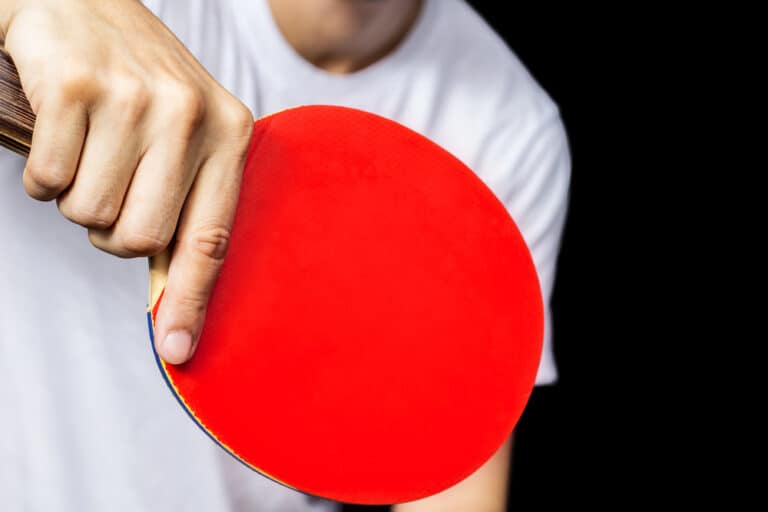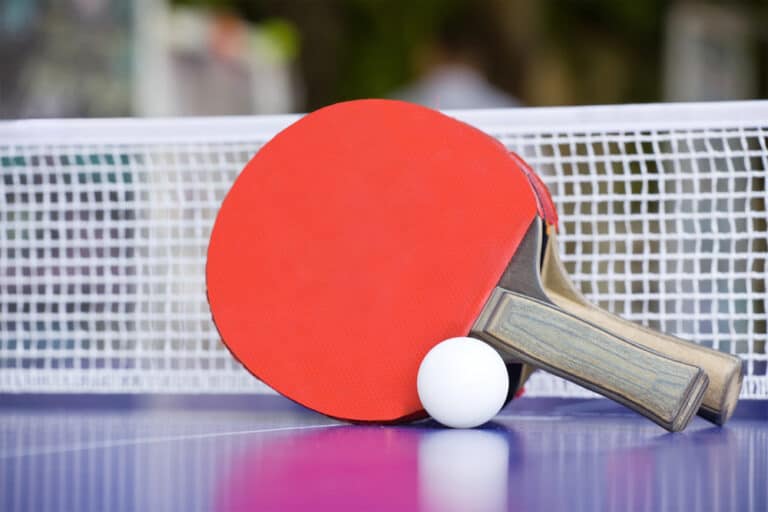Are All Table Tennis Balls The Same?
Table tennis is one of the world’s most popular and played racquet games. The skill and fitness levels needed to compete at the top levels are immense and require that the balls perform consistently and remain durable.
All table tennis balls are not the same, ranging from fun or novelty balls, practice, and training balls, one star, two-star, and three-star balls. Each has a purpose and function, which determines in what conditions and at what level competitions they can be played at.
The rules imposed by the international table tennis federation are very precise and don’t allow for any variation. This means that all balls of a certain grade will be identical irrespective of when they were manufactured.
All Table Tennis Balls Are Not The Same
Table tennis balls are manufactured at different price points for different purposes. Only certain category balls may be used in different levels of the table tennis federation recognized competitions.
There are five levels of balls used in table tennis.
Fun Or Novelty Balls
Fun Or Novelty Balls target children and so are manufactured in fun colors,
Not only do the colors vary, but manufacturers also make them in carrying sizes and different densities.
Fun Or Novelty Balls are purely for home use with young children and are not permitted to be used during official matches.
Balls that are produced with less density and are therefore softer won’t last for a long time if used constantly and will require frequent replacement.
Practice Or Training Balls
Practice Or Training Balls are manufactured to the correct dimensions, but the density is not as hard as higher levels of table tennis balls.
They aim to help younger players and beginners practice with more realistic balls than Fun Or Novelty Balls and develop their skills.
While Practice Or Training Balls are not manufactured to be used in matches, they can be used in an emergency as long as they meet the size and weight requirements of competition table tennis balls.
One Star Balls
One-star balls are intended for low-level competitions at school or club levels.
Once again, although they are not intended for higher-level competitions, they can be used if they meet the size, weight, and color regulations.
Two Star Balls
Two-star balls are primarily used by competent players suitable to practice against a robot or in a training session involving multi balls.
Two Star Balls are manufactured alongside the highest level balls (three stars) but were rejected because they did not meet a three-star ball’s strict quality control standards.
If the two-star balls meet the regulations pertaining to
- Size
- Weight
- Color
They can be used in higher-level competitions.
Three Star Balls
Three-star balls are the only table tennis balls the International Table Tennis Federation is prepared to endorse for competitions played under their banner.
Three-star balls can be expected to last a long time, which at the top competition level equates to three to six months.
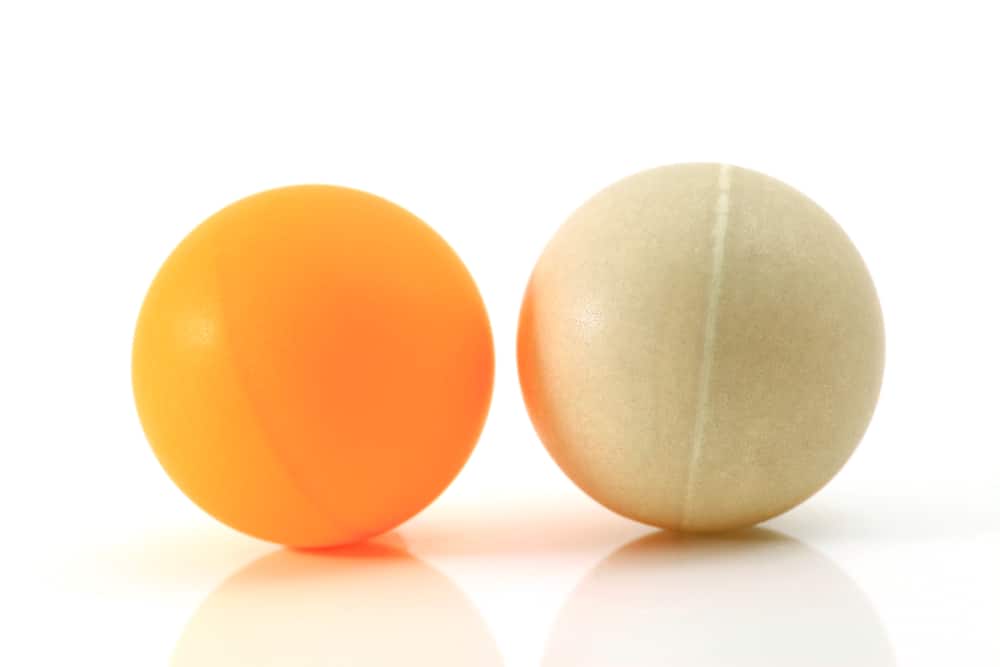
Table Tennis Balls Specifications
The table tennis federation has been working to replace the older technology celluloid balls with plastic (polymer balls). The traditional varieties are still used in major competitions and endorsed by the governing federation.
The primary requirements of the federation demands of table tennis balls relate to the following characteristics.
- The balls must be manufactured from an approved material.
- Table Tennis Balls size
- Table Tennis Ball’s weight
- The Table Tennis Balls must have a balance bounce
- The Table Tennis Balls must be identical, irrespective of the batch they were manufactured in.
The Balls Must Be Manufactured From An Approved Material
The balls must be made from celluloid or a similar plasticized substance.
The Table Tennis Balls Size
The table tennis balls are required to precisely meet the following size requirements.
- The balls must have a diameter of precisely 1.57 inches (40 mm).
- The ball’s circumference must be 4.94 inches (125.6 mm).
The Table Tennis Balls Weight
Table Tennis Balls must weigh exactly 2.7 grams (0.095 ounces.)
Table Tennis Balls Skin Thickness
The table tennis ball’s mass is 2.7 grams (0.095 ounces.), and its volume is 1.96E-6 m3, meaning the ping pong ball’s thickness is 0.40 mm.
The Table Tennis Balls Color
The only two colors permitted by the table tennis federation are white and orange.
In addition, the table tennis balls must have a matt finish.
Players may choose either color; however, the choice is often made based on the background colors and how easy they make the ball to see.
The Table Tennis Balls Must Be Perfectly Round
Based on its official diameter of 1.57 inches (40 mm)., the outer surface area of a ping pong ball is 0.0050 m2.
The Table Tennis Balls Must Have A Balanced Bounce
Under controlled conditions, when a table tennis ball is released onto a block of steel from a height of 30.5 cm (12.0 in), it must consistently bounce up to between 24–26 cm (9.4–10.2 in)
The Table Tennis Balls Must Be Identical
Irrespective of when they were manufactured, tennis balls are required to meet the measurement and bounce requirements identically.
By imposing this rule, the federation guarantees consistent and equal performance across a championship.
How Table Tennis Balls Are Manufactured
Celluloid balls table tennis balls start life out on the cotton fields.
In 1893 a Japanese scientist discovered that when cotton is added to a mixture of nitric acid and sulfuric acid, it forms celluloid.
This became the foundation of several materials, including
- Playing cards coating.
- Cellulose nitrate.
- Flash paper.
- Gunpowder cotton.
The final product becomes the basis for a diverse range of uses, including
- Guitar picks.
- Photographic film.
- Table tennis balls.
There are three steps to manufacturing a table tennis ball.
Step One – The Cellulose Is Molded
The raw cellulose material is delivered in sheets to the manufacturing center.
In a process known as esterifying, these sheets are soaked in alcohol solution until they are soft and pliable.
The softened sheets are placed into half-round molds, equaling one-half of a table tennis ball. Pressure is applied to the molds to ensure the balls’ size, weight, and thickness is achieved.
Step Two – The Table Tennis Ball Halves Are Joined
An alcohol binding agent is mechanically applied to the edge of each half, and a machine precisely positions the two rows together, ensuring that the final ball is perfectly round.
The bond is created, and the balls are formed.
The rough edges of the ball joins are removed by placing the balls in, and the edges are essentially filed down.
Step Three – The Completed Balls Are Graded
The balls are pushed into an automated grading machine, which ensures they are correctly sized, have the requisite hardness, and are perfectly round.
The produced table tennis balls are stamped according to the grade they achieved.
Conclusion
While table tennis balls are required to meet specific specifications, not all are the same. They are generally manufactured to achieve the top grade, and those that don’t meet the specifications are graded lower.

